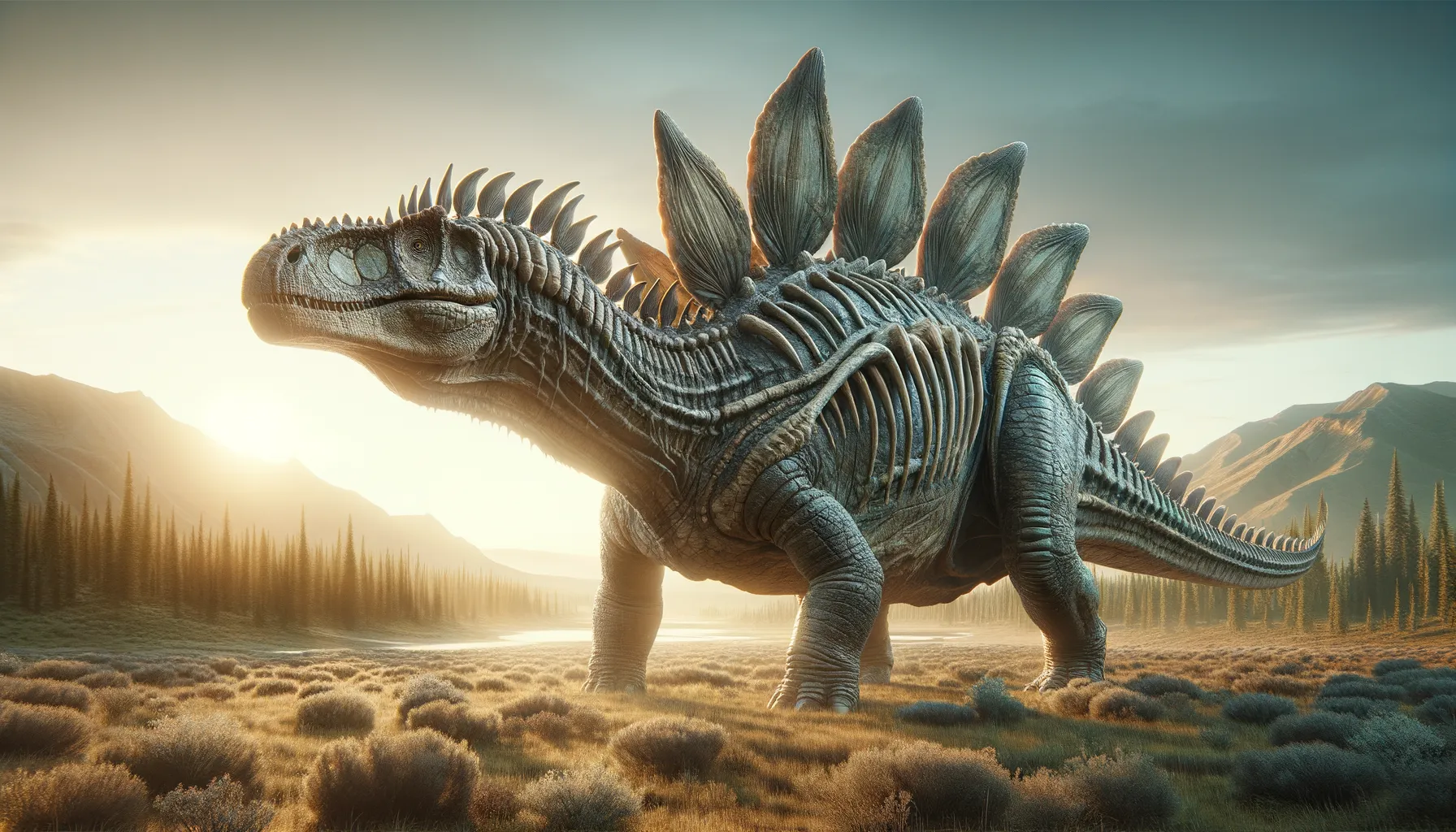
Stegopelta
Armor-clad defender of the ancient plains.
Period
Cretaceous
Length
Around 15 feet long.
Height
Roughly 4 feet tall at the shoulder.
Weight
Approximately 1 ton.
Stegopelta was a heavily armored dinosaur known for its bony plates and spikes. This ankylosaurine lived during the Early Cretaceous period and is often depicted as a well-defended herbivore that roamed the lands of what is now North America. Though not the fastest dinosaur, its sturdy build and defensive adaptations made it a formidable presence. Stegopelta’s fossil evidence primarily consists of partial skeletons, giving paleontologists a glimpse into its life and ecosystem.
Diet
Stegopelta was herbivorous, feeding primarily on low-growing plants and vegetation. Its teeth and jaw structure were well-suited for grinding tough plant material.
Hunting
Stegopelta did not hunt, as it was a plant-eater. Instead, it foraged for food by grazing on available vegetation, using its armored body to deter predators.
Environmental challenges
Stegopelta faced challenges such as seasonal climate changes, which could affect the availability of its plant-based diet. Competition with other herbivores for food was also a significant challenge. Predators, like larger theropods, posed threats; however, its armor provided a significant defense against most of these carnivorous threats.
Speed
Slow-moving due to heavy armor.
Lifespan
Estimated to be several decades.
First discovery
First discovered in Wyoming, USA, in 1905.
Fun Facts
- Stegopelta was a small armored dinosaur that lived during the late Cretaceous period, about 100 million years ago.
- This dinosaur's name, Stegopelta, means 'roofed shield', highlighting its protective bony plates on its back.
- Stegopelta was part of the Nodosauridae family, known for their heavy armor and lack of tail clubs.
- It is estimated that Stegopelta measured around 4 to 5 meters long, making it relatively modest in size compared to other armored dinosaurs.
- The first Stegopelta fossil was discovered in Wyoming, USA, and it consisted of armor plates and a few other bones.
- Unlike some of its relatives, Stegopelta had a solidly built body and short, strong limbs, which suggests it was well-suited for a lifestyle of slow-moving, low-browsing herbivory.
- Despite its armored appearance, Stegopelta likely relied more on camouflage and its armor for protection rather than aggressive defense strategies.
Growth and Development
Stegopelta likely experienced a slow and steady growth rate, common to many armored dinosaurs. Juveniles probably had less well-developed armor, which would thicken and harden as they matured. This period of development was crucial for their survival, as only fully armored adults had adequate protection from predators.
Habitat
Stegopelta lived in lush, forested environments with abundant vegetation. Its habitat would have included diverse plant life, providing ample foraging opportunities. Proximity to water sources was likely important for its survival, as it needed to stay hydrated while feeding on various plant species.
Interaction with other species
Stegopelta interacted with other herbivorous dinosaurs, competing for resources in its environment. Carnivorous predators viewed it as prey but often avoided direct confrontation due to its defensive capabilities. Its interactions with smaller species were minimal, as its large size and armor discouraged potential threats.
Natural lifespan
Stegopelta's natural lifespan is thought to be around 30 to 40 years.
Reproduction
Stegopelta likely reproduced by laying eggs, which modern reptiles suggest were laid in nests built in secluded areas. Parental care was minimal after hatching, leaving the young to develop their own defenses as they grew.
Social behaviour
Stegopelta may have been solitary or formed small groups for protection. Their social behavior would have been influenced by the need to find food and avoid predators. Defensive grouping could deter attacks from predators, leveraging the collective strength of their armor.
Fossil locations
Stegopelta fossils have primarily been found in North America, particularly in regions like Wyoming. These findings provide important insights into its distribution and the environments it occupied during the Cretaceous period.
